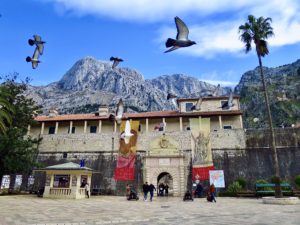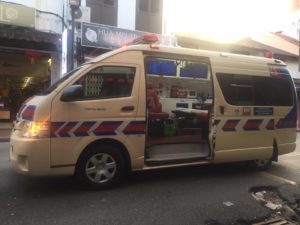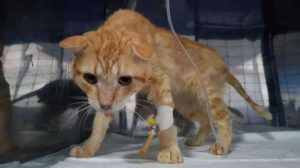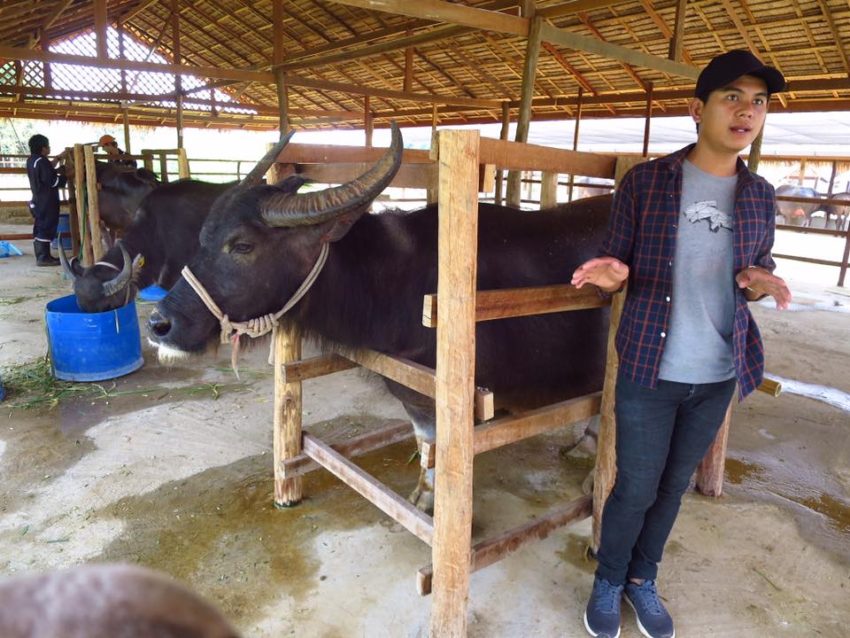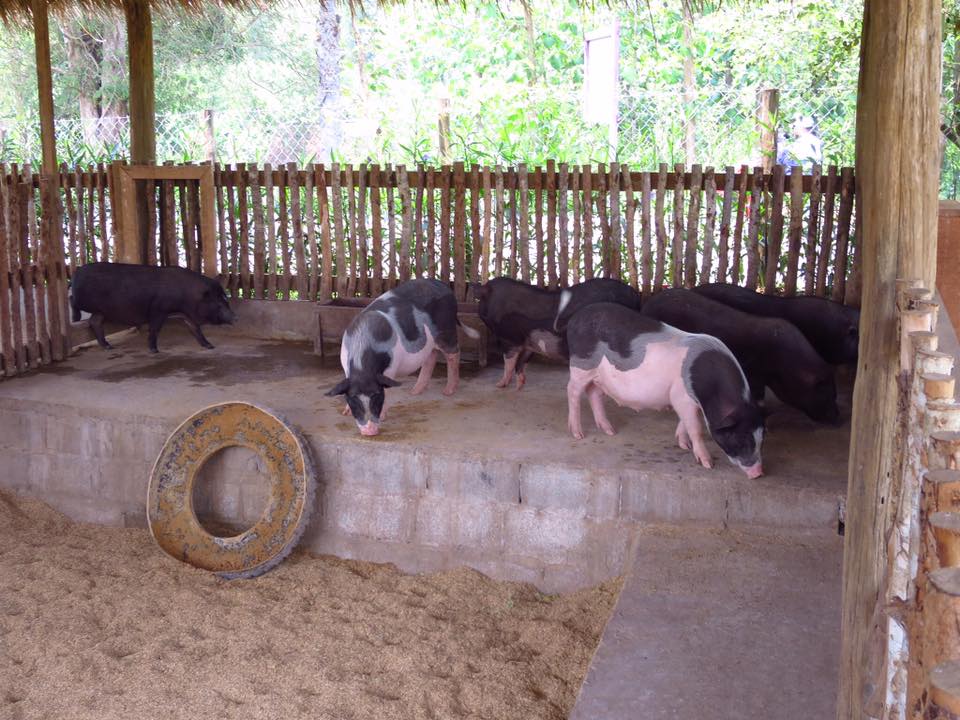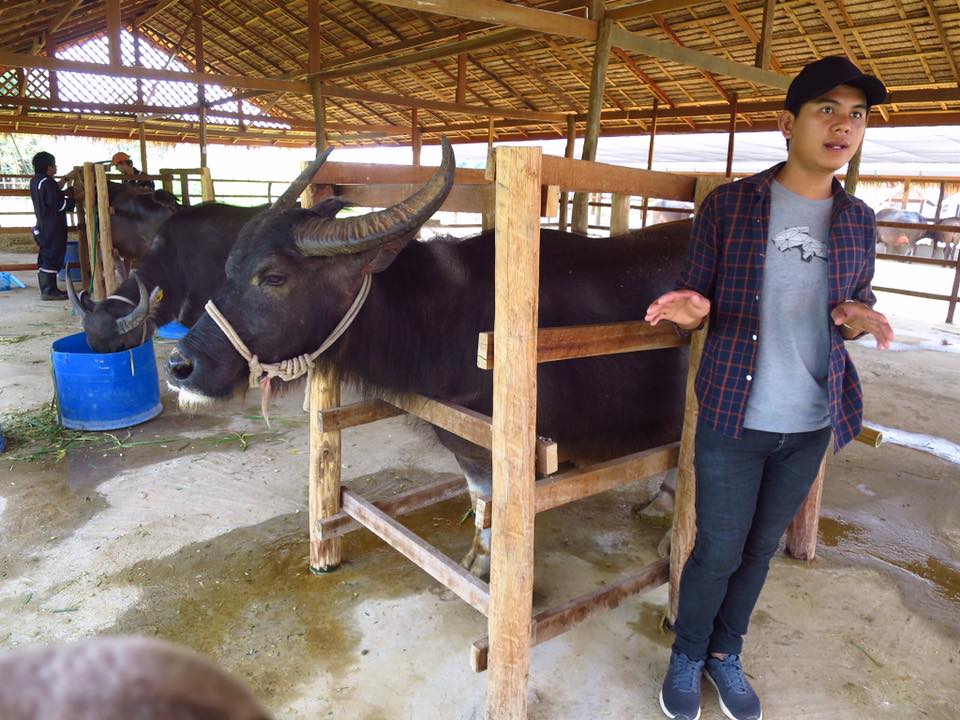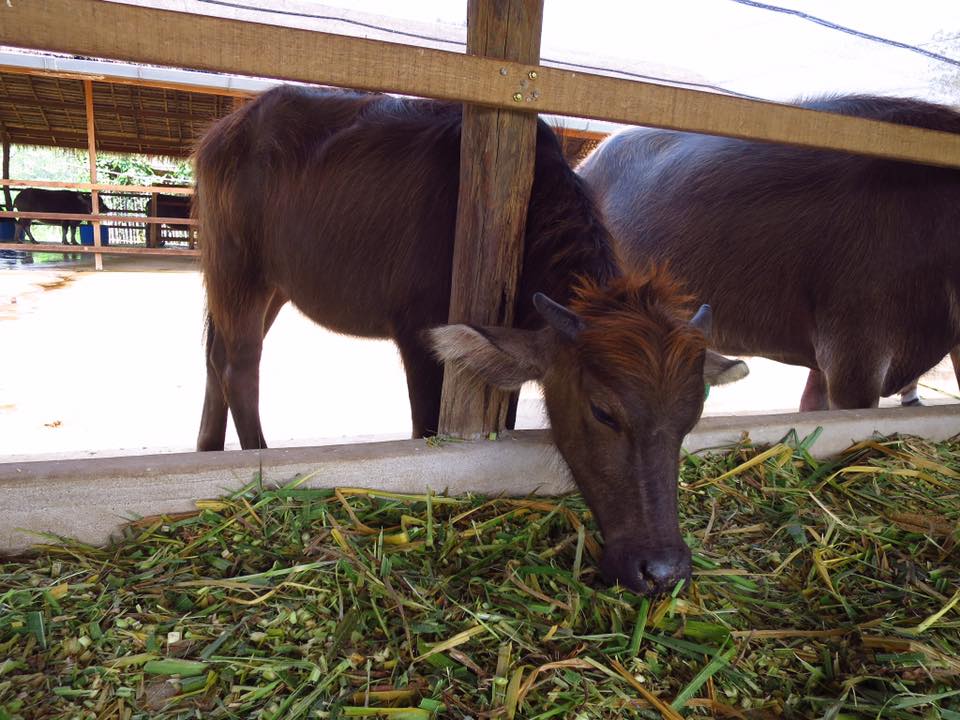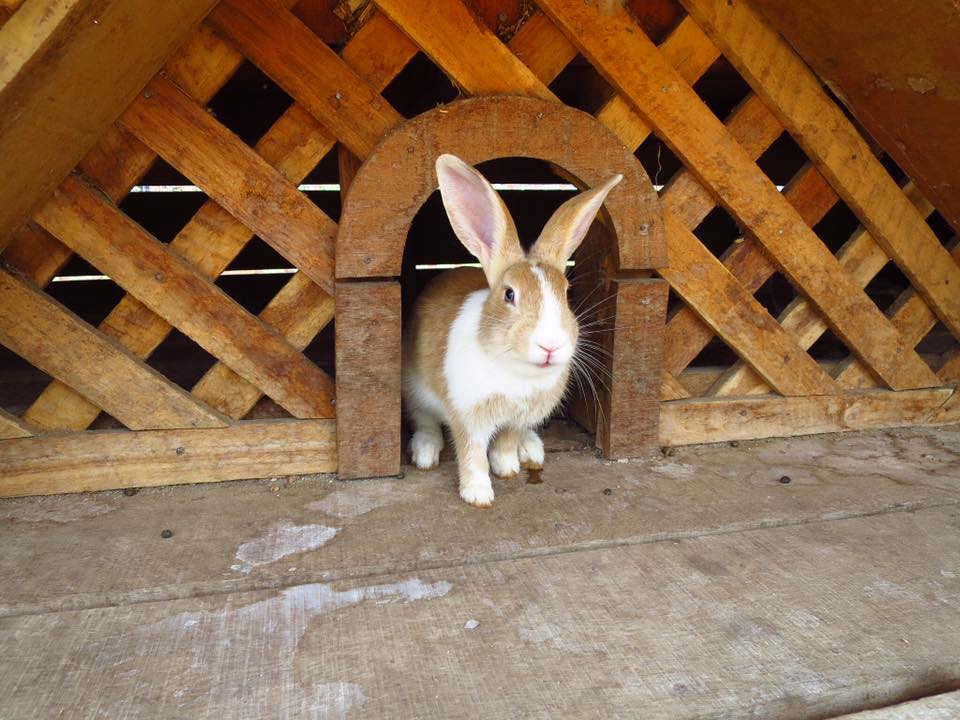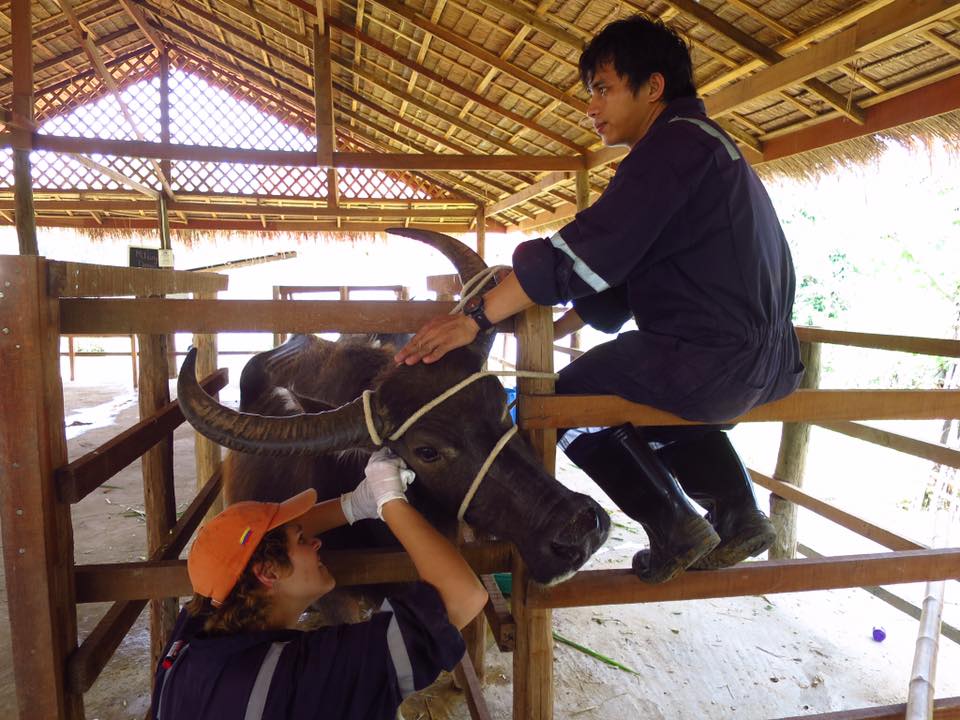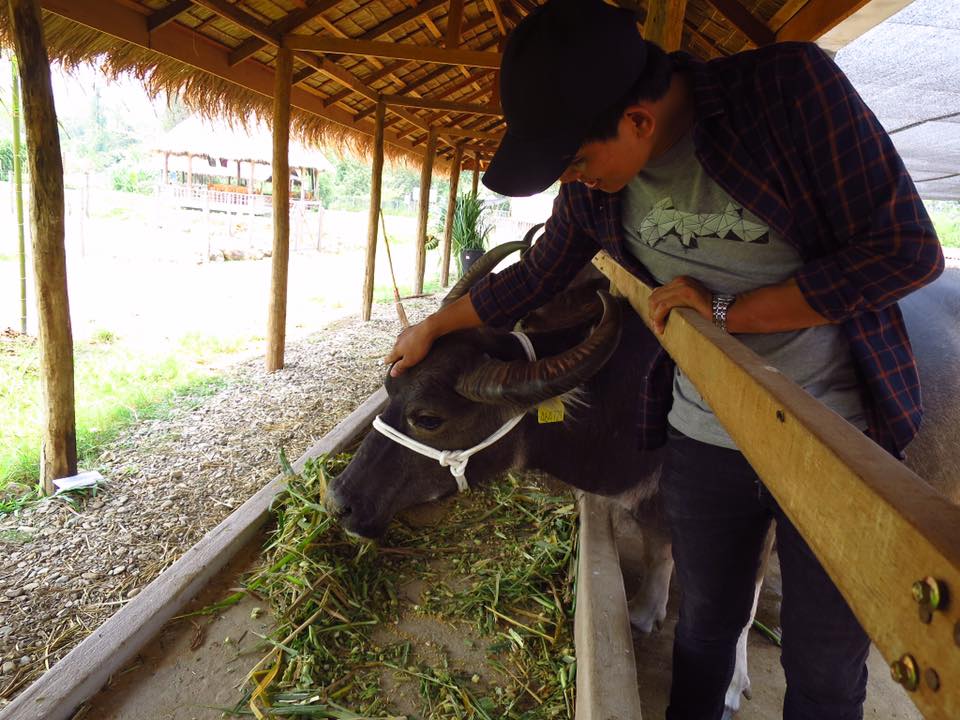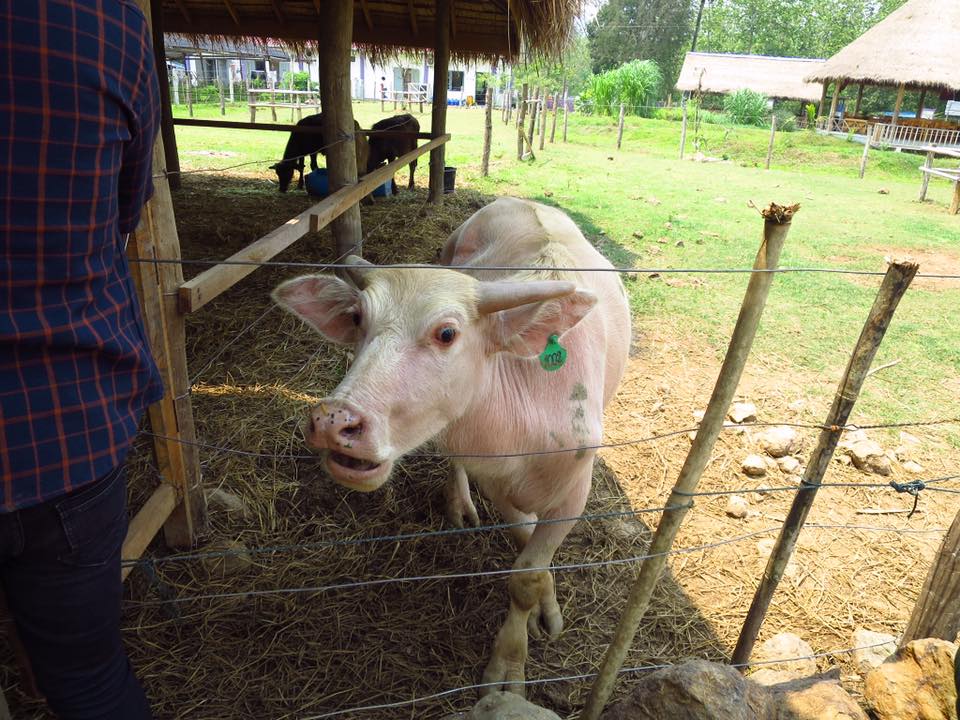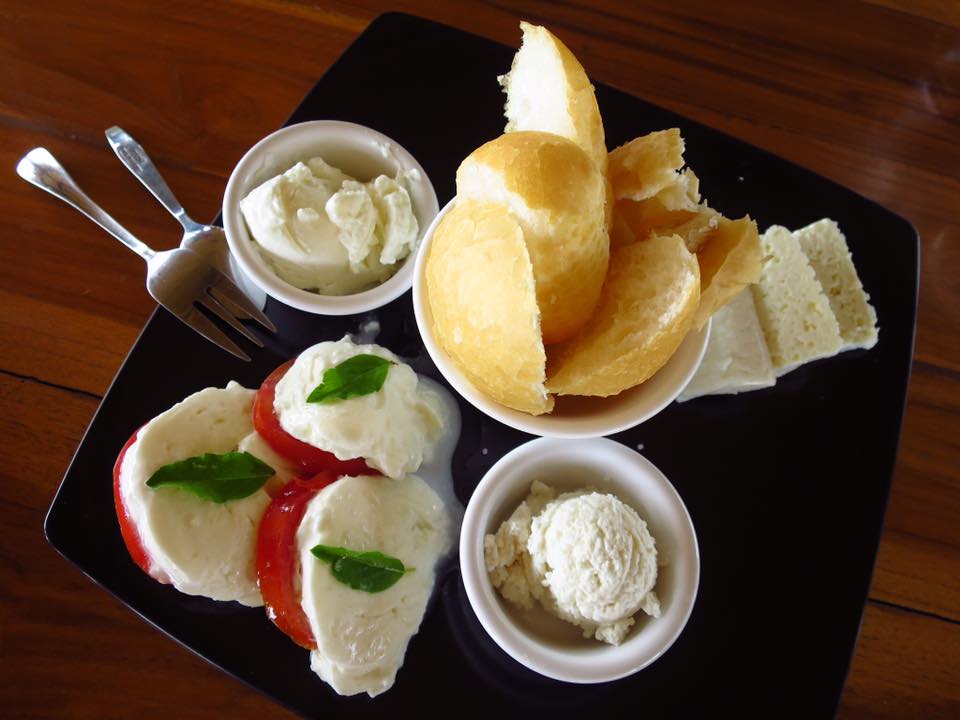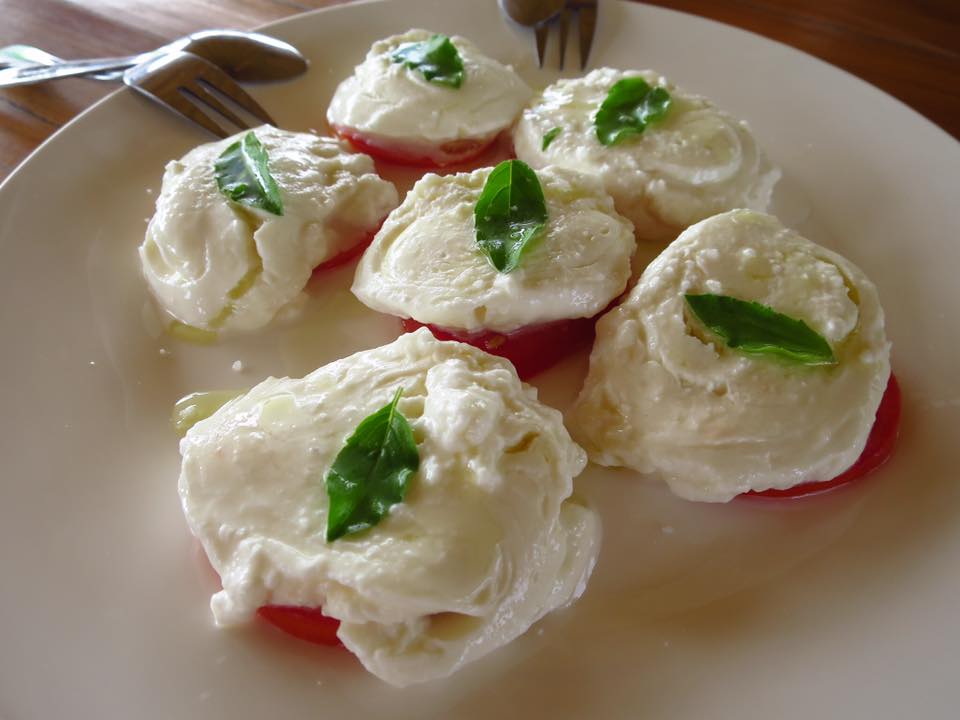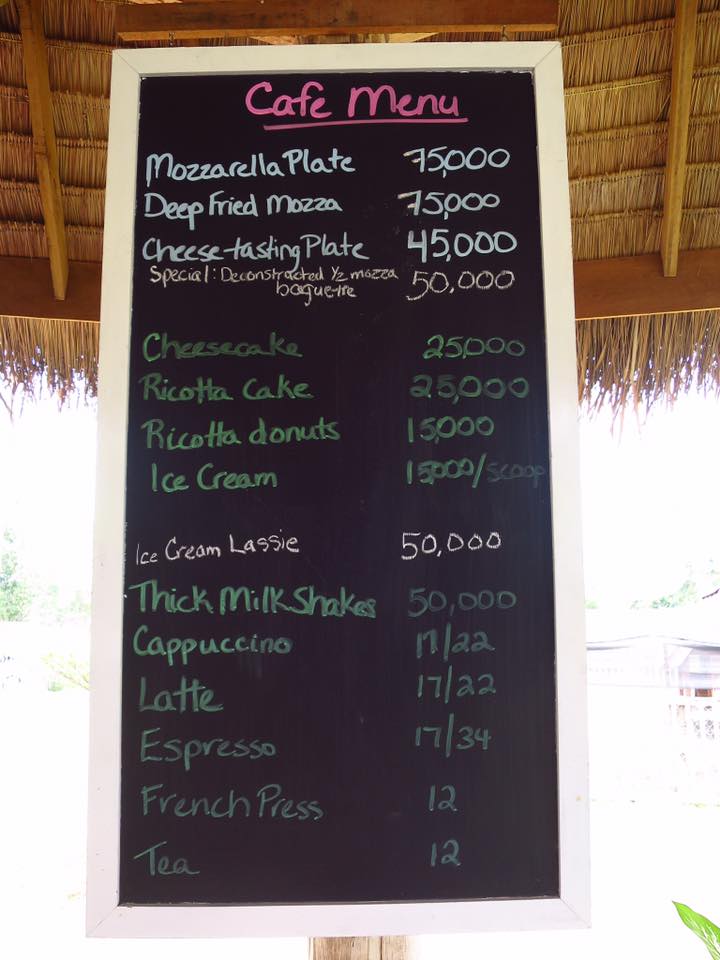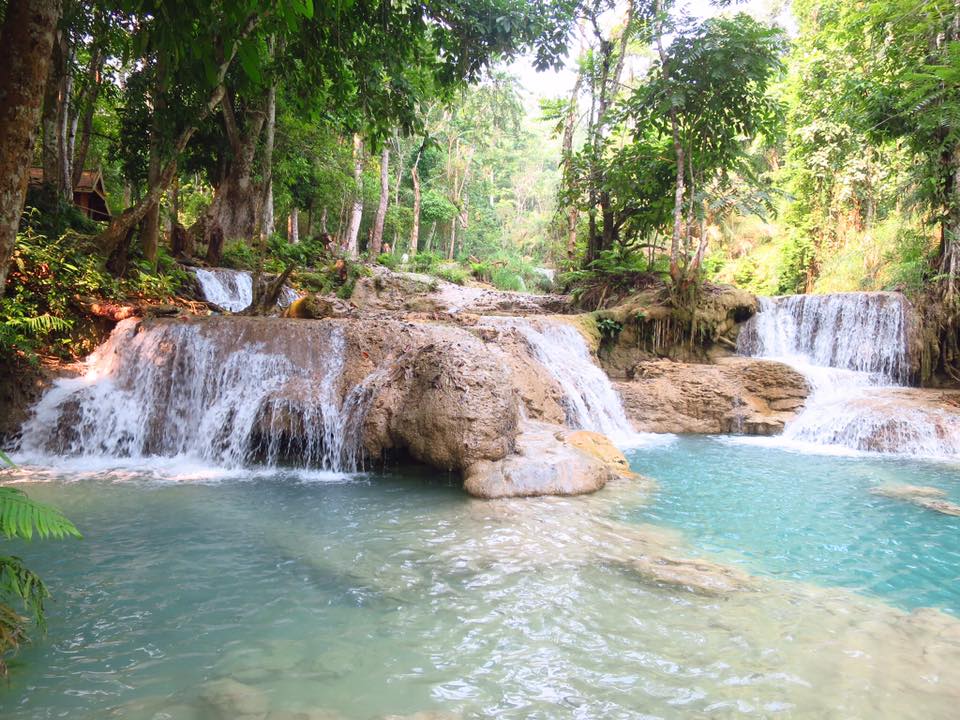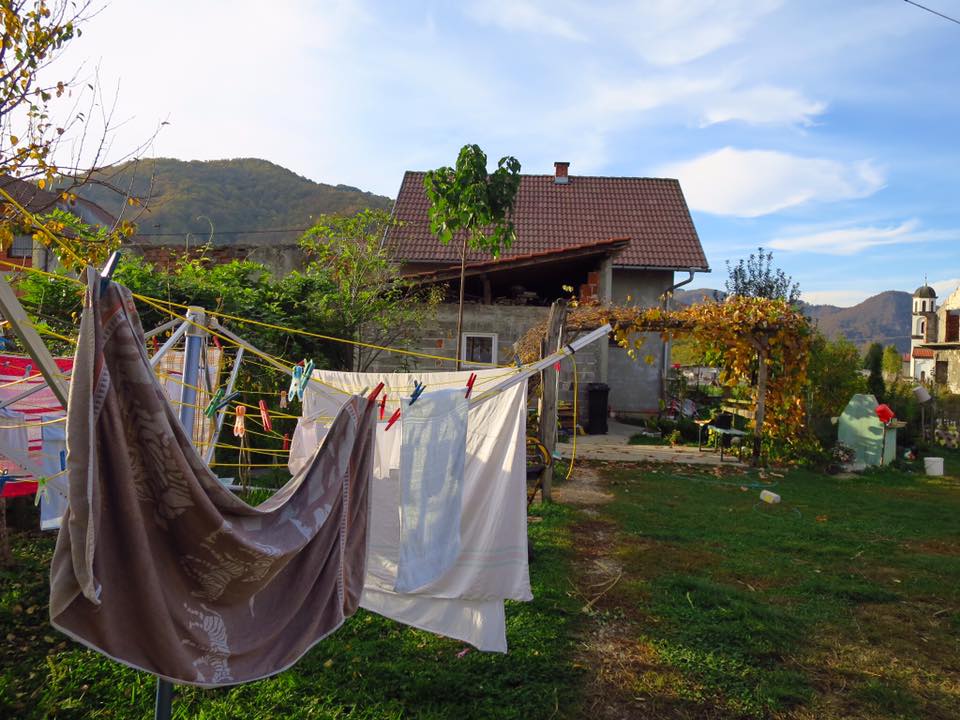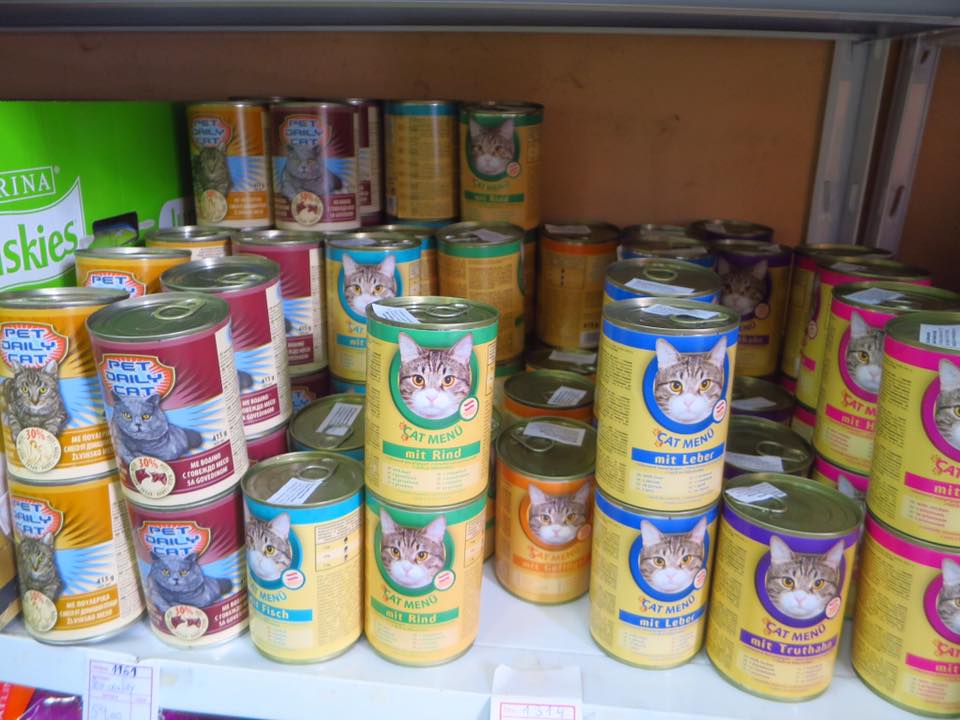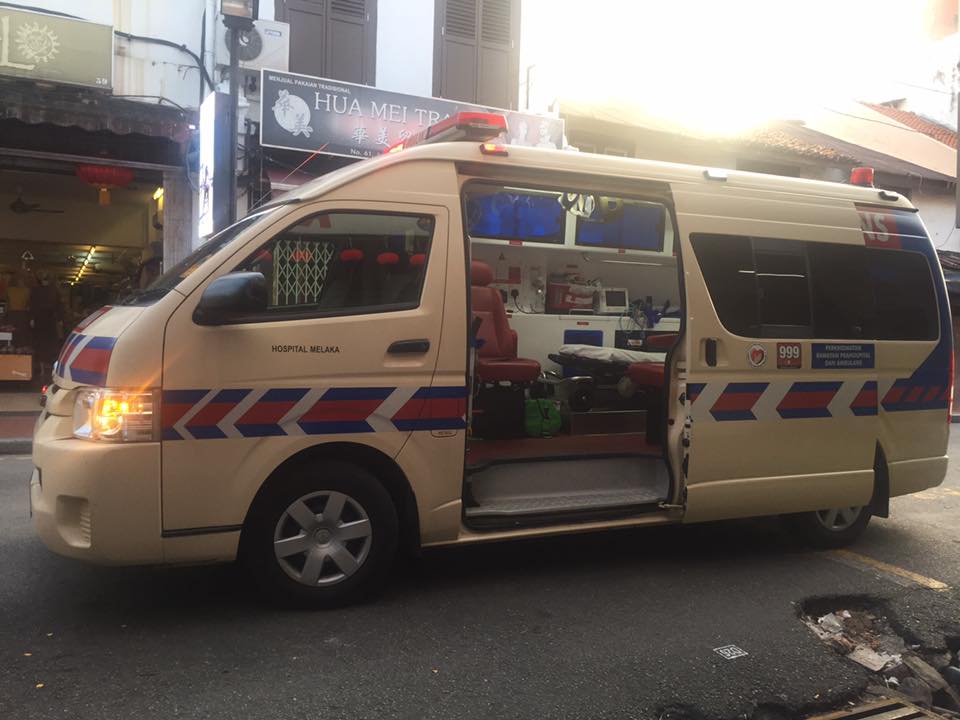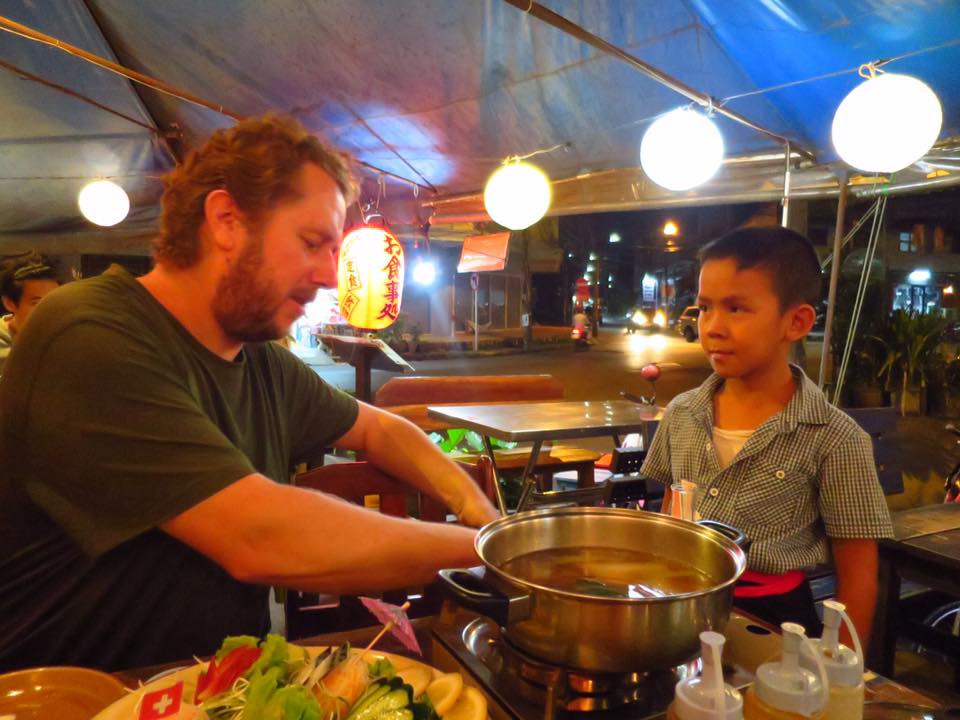On the way back from Kuang Si Falls on April 23rd, we visited Laos Buffalo Dairy. There was no one working at the coffee hut at the entrance. A sign pointed to the office. We wanted to check in there, but were distracted by some cute pigs. There’s a cabinet outside their pen with tubes of bamboo containing grain for visitors to feed them. A young man approached and said he would show us the rest of the farm. This friendly guide gave us an excellent description of what the farm does, and how it works with local farmers.
This dairy farm rents pregnant buffaloes from local farmers and provides pre-natal care which they normally wouldn’t receive. When the calf (just one) is born after a ten-month pregnancy, the calf and the mother will receive all the necessary vaccinations and check-ups before they return to their farm. In the meantime, the Mommy Buffalo’s excess milk will also be used by the farm to make cheese and ice-cream. She will also mate with a handsome Murrah buffalo bull from India before going home. Scandalous!
Regardless of what the buffalo bulls back at the farm may think, this program has great benefits. That’s why the program receives support from the Government of Laos especially with the cross breeding program. At their own farm, buffaloes roam free, so the farmer usually does not find out that the buffalo cow has given birth until days later, and cannot help if there were birth complications. The calf is usually not vaccinated or dewormed. Often the product of inbreeding, a generally weaker calf born in the farmland has only a 50% survival rate.
This dairy program gives the farmer some rental income, and returns a healthy calf and a cow impregnated by a stronger and bigger bull. I’m pretty sure they get free ice-cream too when they come visit the baby and mommy because the guide said tuk tuk drivers get free ice-cream while they wait for their passengers.
Our guide said when they first opened in 2016 the local farmers were really skeptical. It took some time and good word-of-mouth to gain their trust, and have them hand over their prized possession – a pregnant buffalo cow. We are very glad to hear the program is gaining popularity because selling a grown buffalo can fetch the farmer enough money to send a child for higher education, pay for a wedding, or solve a financial emergency. We learned from Xai, our Mekong cruise guide, that a four- or five-year-old buffalo can fetch about USD $1,000.
Besides the pigs, we got to feed rabbits, and checked out some local turkeys. There was a milking demonstration. We both declined to try milking a very gentle new mommy. The guide said one of the first things they do when the cows arrive is to expose them to a lot of human interaction. That way, they won’t freak out when they’re milked for the first time. We saw a staff member strap and hold in place a pregnant cow so that a veterinarian technician could clean out a big puss ball on the cow’s face. They told us the abscess was much bigger when the cow arrived recently.
The guide asked if we wanted to bathe the buffalo. We didn’t, but we did pat and touch the horns of a new mommy. ♪♪♪ Her name was Lola. She was a showgirl. ♪♪♪…… Not really, but she loves to pose for photos. We were really surprised by how soft her skin is. We fed quite a few of the mommies bananas, and the calves milk out of a bottle. They were all very cute.
At the onsite cafe we ordered the caprese salad, cheese tasting plate and ice-cream. They were all delicious. I wouldn’t be able to tell the difference between products made with milk from a regular bovine cow and that from a buffalo cow. We paid for the food, and for the admission (50,000 Kip / USD $6.00 per person), and also made a donation to cover the rental of a pregnant buffalo for about a week.
We hope many more farmers agree to rent their precious pregnant buffaloes to this farm which will, in return, benefit the beautiful buffaloes, and the farmers’ families. I love these water buffaloes and the many we saw along the Mekong River very much. I can’t stop calling them Buffa-Lao!
